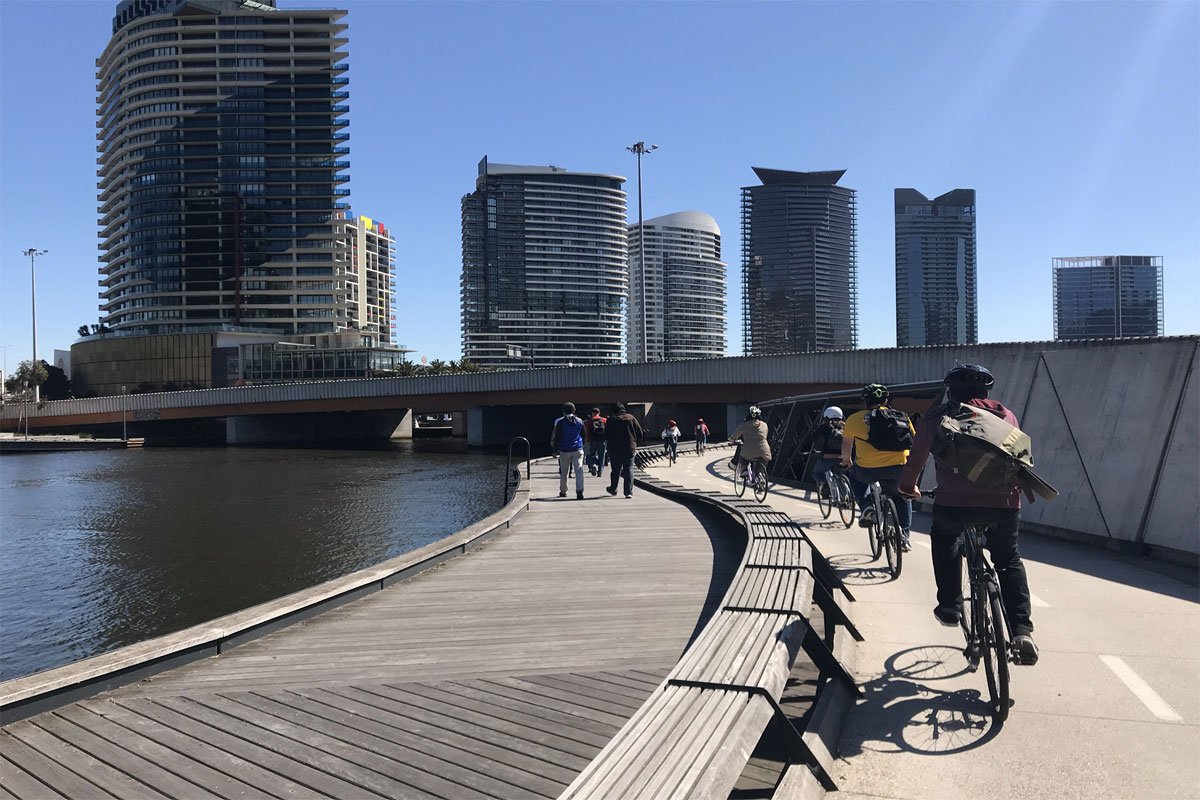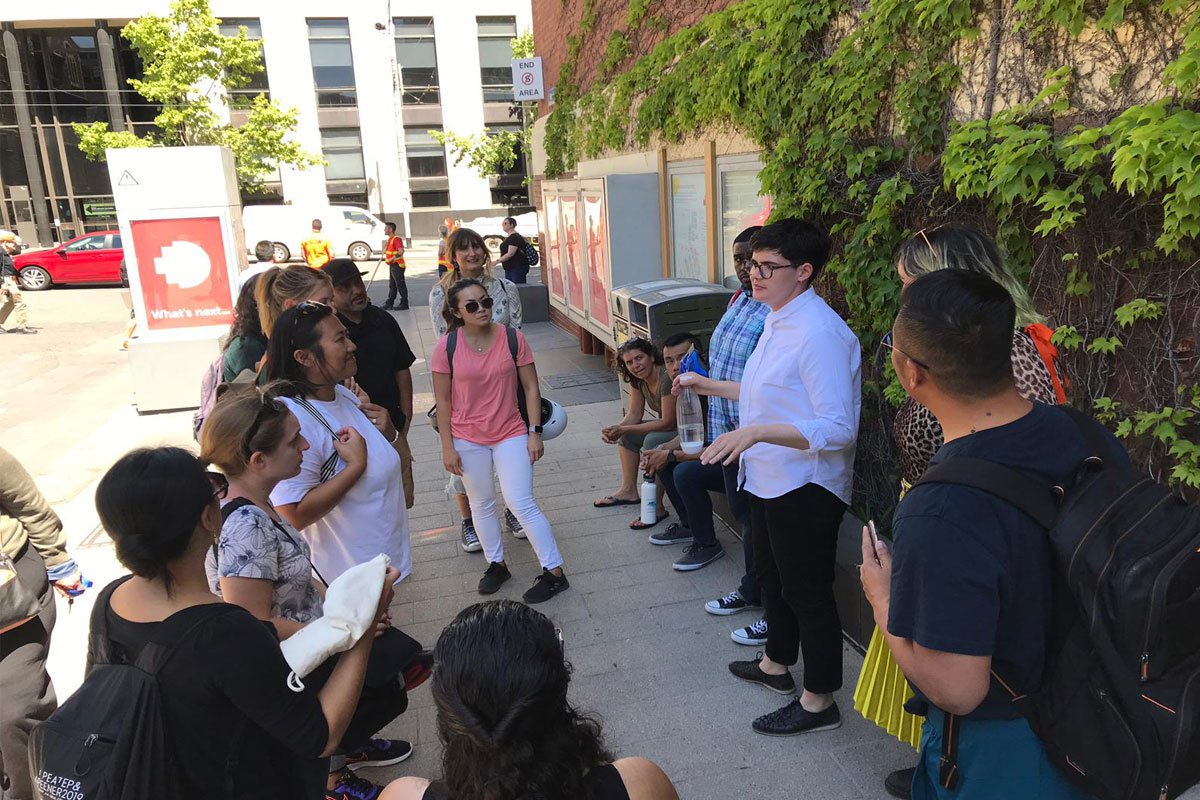
23 Dec How Melbourne Went From ‘Donut City’ to ‘Livable City’: Lessons from Our Study Group
Few cities in the world have undergone the kind of transformation Melbourne, Australia has over the past 40 years. In the 1980s, Melbourne was called ‘The Donut City’ as its downtown was so lacking in life and vitality it was akin to the empty hole in the middle of a donut. Today, the city is routinely ranked as one of the three most livable cities in the world.
The story from donut city to livable city is what brought 8 80 Cities and 15 city leaders from San Jose, CA to Melbourne for a five-day immersive study group workshop generously funded by the Knight Foundation. We met with Melbournians from all sectors, municipal & state government, non-profit, consultants, retails experts, community leaders, indigenous elders, with the goal of understanding how to create a city that centers public life in all it’s efforts and manages change in an equitable and inclusive manner. That’s a big task to cover in only five days, but we learned a lot of lessons from Melbourne that can be applied to cities anywhere. Here are just some of the things we heard from Melbourne’s best and brightest:
- Don’t Be Mystified by Complexity
When Rob Adams, the Director of City Design for Melbourne first started working at the city in the 1980s, the list of things the central city needed addressing was a mile long. It would have been natural for him and his colleagues to feel intimidated by the size of the task in front of them, to be unsure of where to begin. A lot of cities when facing multiple issues like this often try to do a little bit of everything, and as a result, end up not doing anything of significance. Instead of being mystified by the complexity of the sheer number of things they’d need to do to bring public life back to Melbourne, they decided to first focus on one thing, getting more people living downtown, and focused solely on doing that one thing really well. Once that was accomplished (the population of Melbourne’s central district has increased several hundred times since the 1980s), they moved onto the next thing (people-centred streets) and focused on accomplishing that really well, and so on down the list of items. They’ve been more successful at achieving some things than others, but overall, the decision to narrow their focus and city-building efforts on one task at a time has had major benefits.
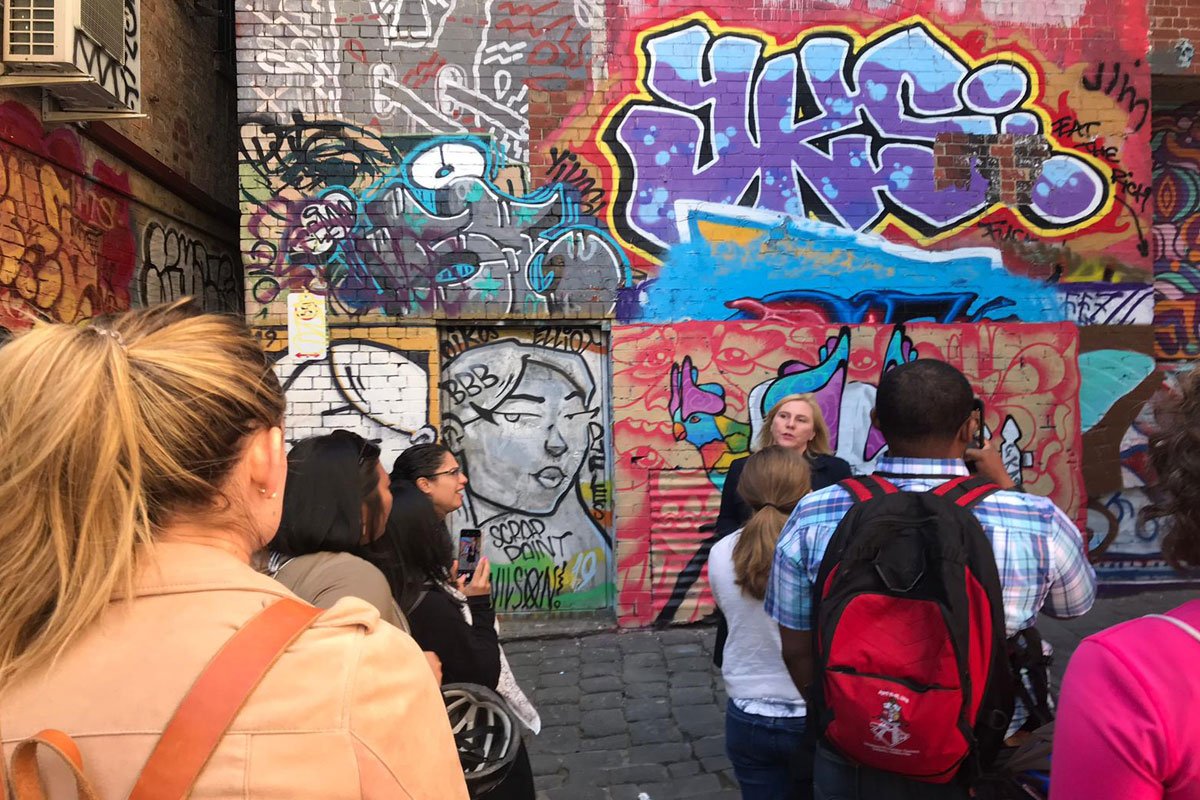
- The Power of Story and Narrative
Storytelling is a powerful tool in the city building toolkit, and who gets to tell stories plays a major role in creating equitable communities. While in Melbourne, we met with local Aboriginal elders who shared with us stories of working with local governments on reconciliation. They spoke to their personal experiences with racist individuals and racist systems. These conversations were crucial in understanding the context of Melbourne’s history and we are so grateful to the elders who shared them with us. One thing that stood out was one elder’s feelings about the word ‘reconciliation’. He feels it is a dirty word that implies both sides have committed wrongs that need to be worked through. As he succinctly put it, “We (Aboriginal Australians) did nothing wrong. We asked for none of it.” Who gets to tell stories, who gets to share history, who gets to name the story is of paramount importance. Creating more equitable cities must begin with allowing marginalized communities the power to start shaping new narratives.
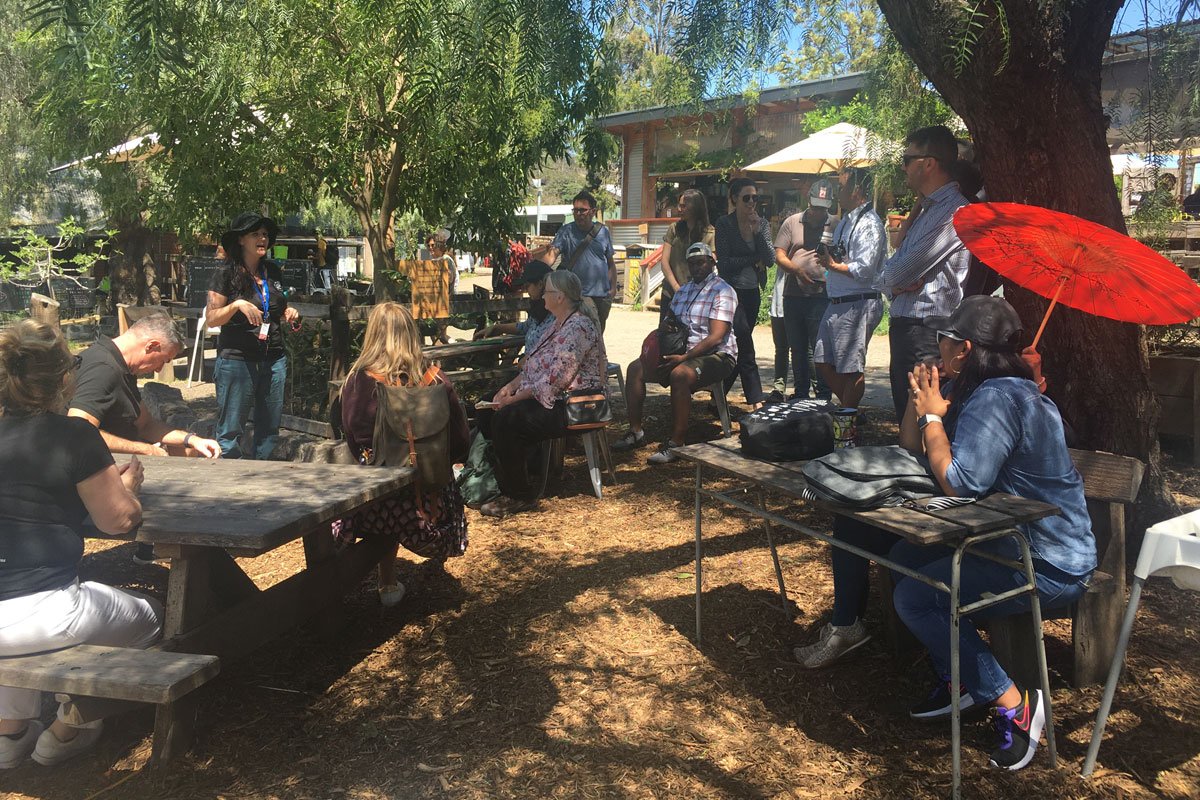
- Co-create Your City
We heard from many different people in Melbourne about how creating fantastic public spaces isn’t just about the hardware, it’s about the software as well. Infrastructure alone doesn’t get us vibrant, dynamic cities. Programming and activating those spaces is just as important. Melbourne is awash with high-quality pubic spaces, but what sets them apart is the freedom local communities and businesses have to bring them to life. The flexibility of local bylaws allows for a wide range of activities to flourish in Melbourne’s parks, streets, and plazas. Adaptability lets those spaces be programmed for different groups, at different times of the day and at different times of the year. Melbourne gives local residents the freedom to take ownership of their public spaces and in so doing, residents are allowed to co-create their city.
